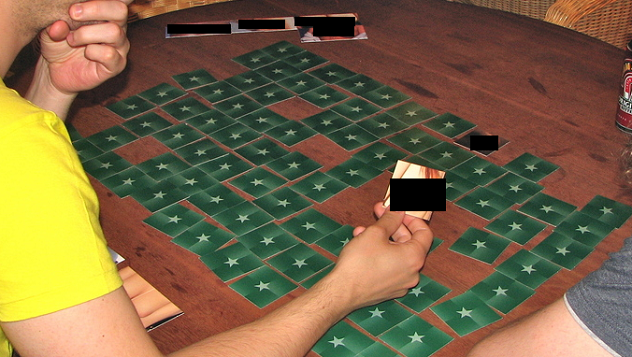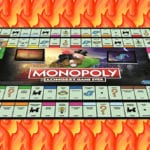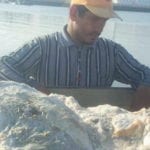 Food
Food  Food
Food  History
History 10 Odd Things Colonial Americans Kept at Home
 Weird Stuff
Weird Stuff 10 Superstitious Beliefs That Once Consumed Entire Cultures
 History
History 10 Bizarre Friendly Fire Incidents in Military History
 Technology
Technology 10 Modern Technologies That Accidentally Imitate Ancient Magic
 Mysteries
Mysteries 10 Mysteries of the Human Genome
 Weird Stuff
Weird Stuff 10 Things So Rare They’ve Only Been Found Once
 History
History 10 Legends Whose Last Moments Undid Their Glory
 Health
Health 10 Futuristic Ideas to Treat Common Medical Problems
 Weird Stuff
Weird Stuff Ten Surreal Attempts to Reverse Baldness
 Food
Food 10 Everyday Foods You Didn’t Know Were Invented by the U.S. Military
 History
History 10 Odd Things Colonial Americans Kept at Home
 Weird Stuff
Weird Stuff 10 Superstitious Beliefs That Once Consumed Entire Cultures
Who's Behind Listverse?

Jamie Frater
Head Editor
Jamie founded Listverse due to an insatiable desire to share fascinating, obscure, and bizarre facts. He has been a guest speaker on numerous national radio and television stations and is a five time published author.
More About Us History
History 10 Bizarre Friendly Fire Incidents in Military History
 Technology
Technology 10 Modern Technologies That Accidentally Imitate Ancient Magic
 Mysteries
Mysteries 10 Mysteries of the Human Genome
 Weird Stuff
Weird Stuff 10 Things So Rare They’ve Only Been Found Once
 History
History 10 Legends Whose Last Moments Undid Their Glory
 Health
Health 10 Futuristic Ideas to Treat Common Medical Problems
 Weird Stuff
Weird Stuff Ten Surreal Attempts to Reverse Baldness
The 10 Most Offensive Board Games Ever Published
Famous board games have made family entertainment out of some dark stuff, from bankruptcy to murder to naval warfare. But when you dig a little further into the industry’s history, you find things getting considerably more disturbing. You spot games about racism, the sex trade, and even genocide—stuff so offensive you can hardly believe the games were ever published.
10“Gay Monopoly”

Fire Island Games released this “Celebration of Gay Life” in 1983, right in time for the decade’s new gay rights movement. Like so many spins on the classic version of Monopoly, this game keeps the core real estate mechanics but throws in a thematic twist. In the original game, players buy houses and hotels; in Gay Monopoly, they buy bathhouses and bars. The original playing tokens have been swapped out for what were assumed to be gay-themed substitutes—a teddy bear, a jeep, a blow drier, a leather cap, handcuffs, and one stiletto heel.
On the flip side, it seems that the game does bring a few new dishes to the table. Take “Family Pride Cards” for example. Each card describes a notable gay man, and the player who can correctly identify him gets to move to any space on the board. The pile also contains a few “Camp Cards.” Draw one of these, and you have to perform a stereotypical gay camp action, such as striking a pose and yelling, “Fabulous.”
“Gay Monopoly” was published by a division calling itself the “Parker Sisters.” They were unconnected to Parker Brothers, who publish the actual Monopoly game and reportedly shut the gay spinoff down with a copyright lawsuit.
9“The Sinking of the Titanic”

This game from Milton Bradley sends players across around the board, rescuing passengers from the Titanic‘s staterooms. You have to escort all the passengers to lifeboats before the ship goes down, at which point the game shifts gears, and you must now hunt for food and fresh water—by drawing cards. A rescue ship eventually shows up, and players must race to it. The first one there wins the game. Everyone else dies.
“The Sinking of the Titanic” received a ton of criticism when it was released in 1975. So the company released a sister version in the UK the following year, changing the title to “Abandon Ship.” This version is set in the Pacific Ocean, and the ship collides with a coral reef instead of an iceberg. The name change cost the company the “Titanic” title’s name recognition. But since people weren’t exactly eager for a game that made light of a famous tragedy, the switch was probably for the best.
8“Life As A Blackman”

This Underground Games release from 1999 offered a simple yet heavy message: Life as a black man is hard. Delivering this message pretty much involved trotting out a parade of stereotypes, blurring the lines between satire and genuine racism.
Each player starts the game as a black 18-year-old high-school graduate. Players must make moral choices throughout the game, and may find themselves in Black University, the ghetto, the military, or “Glamourwood.” The first player to reach the “freedom” space at the top of the board wins the game.
Unlike many games on this list, “Life as a Blackman” isn’t forgotten. An app of the game is coming soon for your iPhone.
7“What Shall I Be: The Exciting Game of Career Girls”

Published in 1966 by Selchow & Righter, this less-than-exciting game was once considered an educational game for young girls, outlining suitable career options young women may want to pursue. The game includes a detailed outline of the “proper” personality for each of the prospective careers.
It’s perhaps no surprise that the only options included in the ’60s game were a teacher, airline hostess, actress, nurse, model, or ballet dancer. The male counterpart of the game, published by the same company, had career options such as lawyers and astronauts. Fortunately, the game was updated in 1976, swapping the stereotypical women’s roles for such career paths as medical school and law school.
6“Blacks & Whites”

Here’s another example of a game that tries to illustrate racism, with pretty shocking results.
“Blacks & Whites,” according to publisher Dynamic Design Industries, depicts housing discrimination through “the absurdities of living in different worlds while playing on the same board.” At the beginning of the game, players choose to either be a “Black” or a “White,” and the choice handily determines who wins the game.
The Whites comprise the majority of players, start with $1 million, and can buy property anywhere on the board. Their black counterparts are the minority, start the game with only $10,000, and can’t buy many properties. These properties that the players fight over range from the “inner ghetto” and “outer ghetto” to “lower integrated” and “upper integrated” neighborhoods to, lastly, “newer estates” and “older estates.”
True to life in the ’70s, when the game was published, “Blacks” and “Whites” each draw from their own set of “opportunity cards.” A typical White opportunity card: “Stock dividend from a company that makes tear gas. Collect $40,000.” A typical Black one: “Government begins urban-renewal project. You lose both Harlem and Watts. Collect full price less 10% from Treasury.”
5“Busen Memo”

This 2003 memory game plays practically just like any other memory game you would buy for an 8-year old. Except for one thing: Instead of matching the usual toy cars and smiling apples, players of the game match the right and left breasts of 48 women.
Each individual tile has a picture of one of a woman’s bare breasts, You place all the cards facedown at random and then flip two of them over. If you manage to uncover a matching pair, you get to go again; if not, your opponent takes a turn.
In case you couldn’t guess it by now, “Busen Memo” is German for “Bosom Memory.”
4“Darkies In The Melon Patch”

Now it’s time move away from those games that merely teach about racism—“Darkies in the Melon Patch” is racism, plain and simple.
Players take up the roles of four dark-skinned gentlemen attempting to escape a patch of melons. Angry farmers and bearded grandmothers act as threats. The path also offers some tempting distractions, such as melon races and seed spitting contests.
Though the game allegedly dates back to 1910, some versions for sale are modern counterfeits. It’s possible that the game was manufactured fairly recently and was just falsely dated to a time when such racist nonsense seemed reasonable.
3“Project Pornstar”

“Project P” casts players as directors of their own porn flicks. If you’ve ever played a trading card game, you have a rough idea of how this works—the various cards in the game represent components for your film, and the best combinations win you the most points. Since you’re making a porno, one set of cards represents your actors (men, women, amenable livestock), and another represents objects (handcuffs, for instance, or a cucumber).
Another set, the “action cards,” further change the course of your film. If a performer’s face doesn’t quite meet expectations, you can play a card to throw a paper bag over it. There’s an “AIDS” card, too, of course.
Fun for the whole family!
2“Five Little Ni***r Boys”

Maybe it’s because I am indeed African-American, but I think the blatant use of one of the most offensive racial slurs smacked on the front of an actual marketed product should leave anyone speechless.
This 1950 release from Britain is a target shooting game—yes, a target shooting game. It consists of five pieces resembling African children along with a small pop-gun rifle that fires corks. And, if you couldn’t already guess it, the only goal of this game is for its participants to shoot down the four little N-word boys in cold blood.
The first player to shoot down a predetermined amount of pieces wins the game but loses a conscience.
1“Juden Raus!” (Jews Out!)

Nazi Germany featured quite a few horrifically offensive anti-Semitic games, from shooting games reminiscent of the above British example to games tracking the triumphant rise of the swastika. But the most notorious of these games is probably “Juden Raus,” published in Dresden in 1938 approximately one month after “Kristallnacht”(the Night of Broken Glass).
It’s a simple game. You roll dice and move your token to Jewish homes, where you collect Jews. You must then escort your Jews to a “collection point” so they can be banished from the city. “If you are the first to expel six Jews,” reads the game’s original rules, “you are the undoubted winner.”
Still, the Nazis were the most evil people in history, so it’s unsurprising that they produced such a game, right?
Not exactly. “Juden Raus” was manufactured by some private German company, and the Nazis themselves criticized the game.
I’m just your average human being, who spends an indecent amount of time on the computer.








